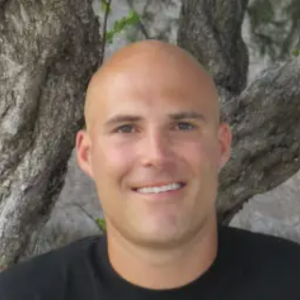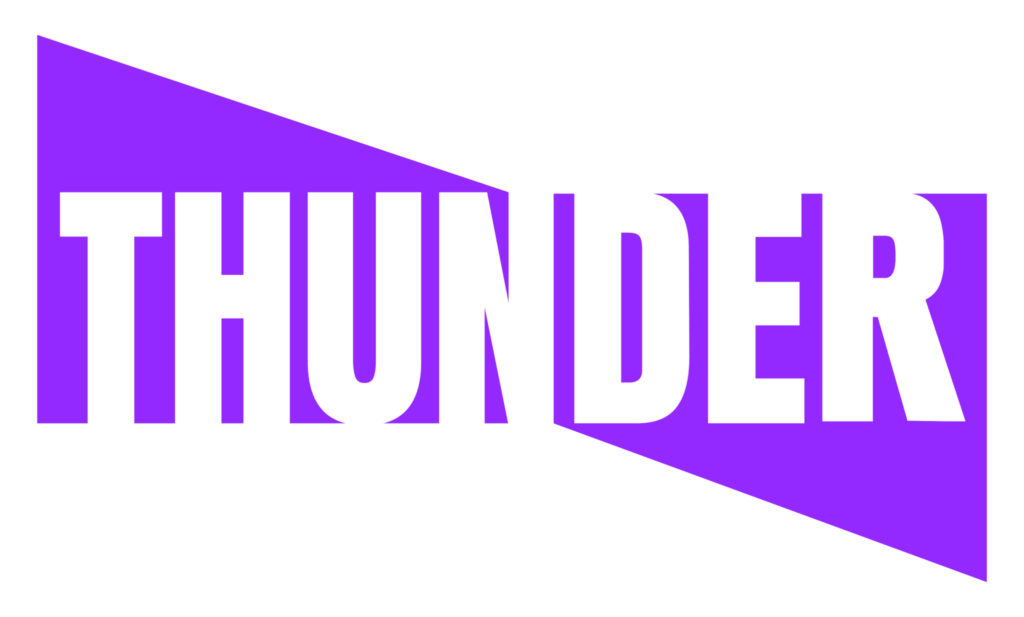BLOG
Meet the Rainmakers: Carter Wigell, CEO

We recently sat down with Thunder CEO, Carter Wigell, to learn a little more about the leader of our crew. Here’s what he had to say!
Q. Carter, Thunder is fairly new to the Salesforce ecosystem, but we’ve learned that you were actually one of the first 100 employees at Salesforce! Can you tell us a little bit about what the early days were like?
The early days were pretty wild because, believe it or not, back in 2000 cloud computing was still fairly new. When I joined salesforce, there were less than 100 people at the time, and I was in the sales organization answering the 1-800-no-software line trying to generate leads. There was a group of us in a room together writing different scripts to try different pitches to various prospects, to convince them it was secure to put their data in the cloud. It was very early at that time and we had a lot of different programs that we ran successfully, pushing free trials that led to a number of new Salesforce customers that we could see and grow. It was a major collaborative effort with a lot of focus on rigor around the sales process and methodology enablement in the earliest days at Salesforce.
Q. After nearly 10 years at Salesforce, you started your own SI, CloudTrigger. Give us some background on that.
Absolutely. Yeah, I was really excited. I was incredibly fortunate to have a very successful career at Salesforce. I had a ton of great mentors who took me under their wings at a young age in my career, and gave me a lot of opportunity. So I made the really hard decision to leave Salesforce after nearly 10 years. And it was very flattering, on the way out a number of executives, including Marc (Benioff), said that they wanted to help support us in that new company (CloudTrigger).
One of the things we did a bit differently right out of the gates was to build a focused sales team, because having been inside the 4 walls at Salesforce, it was really important to us that a key value would be customer success, being highly responsive to our customers, and how we engaged with our partners. With that intention in mind, how could we work very closely? Strategically; focusing on how we could work rapidly with Salesforce to help them with a lot of key customers.
We built a really technical team with Salesforce, which made us able to scale very rapidly, with a number of key areas in the business. And we had a ton of success, it was a lot of hard work, but a lot of opportunity back in 2009. I think that’s what’s so exciting for us today with Thunder – there’s an even bigger opportunity that I see in the market.
Q. After CloudTrigger got acquired by Cloud Sherpas, which then got acquired by Accenture, you started another company called Ideator (busy guy!). What’s the 411 there?
Ideator became a dream of mine along my career path. Really, I just feel fortunate in my life that I’ve had a lot of great mentors and advisors that have helped me both in my career and on the personal side, and over the years starting to develop more of my own entrepreneurship excitement and opportunities. I realized that a lot of that success is predicated by the mentorship programs that you might get access to in the market today, the incubators, the accelerators. There are a lot of startup programs in the market that really help entrepreneurs – getting them funded with capital and providing access to great mentors and advisors to help them grow their businesses. But they have a very low acceptance rate. And so the vision with Ideater was to provide a virtual network to give entrepreneurs access to those same types of resources, but in an online environment. Think Match.com meets your physical accelerator space. There’s a lot of brilliant entrepreneurs all over the world in various countries that don’t easily have the ability to get on a plane and move to California to join one of these incubator programs. So we started Ideator with that premise. We ended up working with entrepreneurs around the world, over 50 global universities and a number of corporate organizations, to help support global entrepreneurship.
Q. You’ve been working in the Salesforce ecosystem for a long time… but you did take a break for a couple of years to help run several departments at WeWork. So, we’re dying to know – who would you have cast to play you in the recent Hulu movie “WeWork: or The Making and Breaking of a $47 Billion Unicorn“?
Ha ha ha, like who do I look like? Or who fits the scenario? You know, I was so fortunate to have so much success at Salesforce, and then to run my own SI, it was such an incredible career path… but I have this intense entrepreneurial spirit, so I was excited to challenge myself with something outside of Salesforce. At WeWork I was running several divisions – Commercial Technology, Global Commercial Tech, Global Enterprise Services and Global Account Management. It was like a Die Hard type of situation, an environment where I was like ‘I’m just trying to survive and make a lot of things happen at the same time’. So Bruce Willis comes to mind for this moment (plus we both shave our heads, which of course is cool).
Q. Joking aside, tell us why you came back to the Salesforce world – and more specifically, why did you start Thunder?
I came back to the Salesforce world to really get back to the roots, and what I discovered is that there is a massive opportunity in the market right now. After doing this a couple times successfully, in our current market and environment I see an even bigger opportunity than I ever had before. There’s been a number of great Salesforce companies and SIs, but I also think there’s been a lot of gaps, and that is what is really exciting for us – to fill those gaps and create a better organization than we ever have before in this space.
We have high aspirations we’re starting with. How do we better support and give back to nonprofits? How do we better support our local and global communities? With Thunder, we have an incredible opportunity to do just that, take our superpowers and give back. There’s just a massive challenge in the Salesforce ecosystem today. Clearly, I believe that Salesforce is the best CRM product in the market, hands down. A lot of companies are challenged with market conditions and different business economic challenges that they must face every quarter, every year. Over time in the Salesforce space there’s a big kind of drop off, a gap between the GSI and the non GSI’s that are supporting both commercial and enterprise customers, and so there’s a lot of nuances to help organizations be successful with CRM including change management, alignment to business goals, objectives and outcomes. And then truly, the ability to get in and help these organizations from an analytics and data and AI perspective.
So we are focused on a number of these core tenets: we’re bringing agile change management to the market that will help both small and large enterprises be successful to adopt Salesforce in the way that they envisioned out of the gates and bought into the dream of how CRM can change businesses – which it can. We’re really excited about the team that we put together. We have a very rare opportunity here, with the team, with our investors, with the community surrounding Thunder, to go build one of the best companies in the world.
Q. Ok last question. What are you most excited about for Thunder in the near future?
I would say what I’m most excited for, and what I think is also our biggest challenge, is not our ability to grow into a 1,000 employee company or to a $100 million company, but to build a great culture. We are building this company together, and nothing is more important than making sure that the team is happy, and that our customers are happy. If we do those 2 things, everything takes care of itself. I deeply believe that, and I have a huge, huge passion to focus every day to make that happen with our team.
